If you’re waking up to face our fourth lockdown in Melbourne this week, I feel your pain. Over the weekend, I noticed a large number of people walking the streets and taking to the park to bask in the sunshine and get that permitted exercise.
It occurred to me that a number of people may be wanting to know how to get the best out of this time now that you’ve decided to commit to it.
So here is my best advice to really look after yourself and stay healthy both physically and mentally during lockdown.
These are my top tips for you to use those 2 hours that we are permitted to exercise outdoors during COVID-19.
However, before we launch into the exercise, we need to think about what’s appropriate for you.
What will you use your 2 hours for?
Let’s go through each one.
If you’ve been following me for a while or know me personally, then you know I’ll say that if you need to exercise to lose weight, your approach to nutrition is wrong. So that nails the first one.
Don’t exercise to lose weight.
If you don’t understand why, make sure to get in touch with me – I will explain. So, let’s get into it!
Building muscle when you cannot access a gym is still possible. Here are some ideas, although please note that I am not giving anyone specific training or medical advice.
You can find examples of the movements on my health and wellness app under the free stuff tab.
As we get older, we really do need to focus on our bone density. This can be checked by having a DEXA scan, but some of the exercises you can do to improve it are as follows:
Weight-bearing exercises such as walking, hiking, jogging, climbing stairs, playing tennis, or dancing. So, if you have your own tennis court, go for it.
Basketball, netball, and cricket are all great as well – this is because we are jumping and running around.
Resistance exercises such as lifting weights can also strengthen bones, but this may be hard if you cannot access the gym during lockdown. However, doing some simple plyometrics will get the same results.
Plyometric exercises can cause stress to the tendons, ligaments, and lower-extremity joints, especially the knees and ankles. It’s important that you have the strength and fitness level necessary to do these exercises safely and effectively, so be careful. Some of these exercises include the following:
For this exercise, you’ll need a box or something to jump on/off that’s 12 to 36 inches high. To increase the intensity, you can do the exercise using only one leg.
Use caution when adding plyometric exercises to your workout routine if you’re a beginner or have any injuries or chronic conditions. It’s best if you already have an established workout routine and are physically fit before beginning plyometric exercises. These exercises require strong ligaments and tendons since they can cause stress to the joints.
Slowly add plyometric exercises to your routine, starting with basic, lower-intensity moves before moving on to more challenging movements. Gradually build up the intensity and difficulty once you’re sure your body is strong enough to handle the exercises. If you find that plyometric training is too intense, consider trying out a different method of exercise.
Now, this is a polarizing topic. The fitness – or as I say, the sickness – industry wants you to think that you need to smash yourself in 2 hours and work your heart like crazy, but what does this actually achieve?
All it does is increase the stress hormone cortisol, which most of us already have too much of. Cortisol stops our bodies from using our fat stores as fuel and promotes inflammation.
In short, the theory is that with our ever-stressed, fast-paced lifestyles, our bodies are pumping out cortisol almost constantly, which can wreak havoc on our health. This whole-body process, mediated by hormones and the immune system, identifies cortisol as one of the many players.
Repeated elevation of cortisol (which comes from even moderate exercise) can lead to weight gain. One way is via visceral fat storage.
Cortisol can mobilize triglycerides from storage and relocate them to visceral fat cells (those under the muscles deep in the abdomen).
A second way in which cortisol may be involved in weight gain goes back to the blood sugar-insulin problem. Consistently high blood glucose levels along with insulin suppression lead to cells that are starved of glucose.
Those cells are crying out for energy, and one way to regulate that is to send hunger signals to the brain. This can lead to overeating – and of course, unused glucose is eventually stored as body fat.
Another connection is cortisol’s effect on appetite and cravings for high-calorie foods. Studies have demonstrated a direct association between cortisol levels and calorie intake in populations of women.
Cortisol may directly influence appetite and cravings by binding to hypothalamus receptors in the brain. Cortisol also indirectly influences appetite by modulating other hormones and stress response factors known to stimulate appetite. THIS is why we should not exercise even moderately if our goal is simply to lose weight.
Yes, we come back to focusing on nutrition – ask me what to do and I will help you.
So, what the hell can I do to improve my cardiovascular health then, you may ask? Well, depending on your athletic background, any medical conditions, and your experience, here are the basics.
Establish your Maximum Aerobic Function.
HR 180 - Age – this is the maximum HR you should be at when you are running or briskly walking. For example, 180 - 50 years is an MAF HR of 130 BPM.
You may need to use a heart rate monitor, but remember, watch-based sensors are not 100% accurate and they do spike, so a chest strap is best, or simply use the old fingers on your pulse and count for 15 seconds, then x 4 to get your HR.
Working at your MAF HR will keep you burning FAT and build your aerobic and cardiovascular health. You will no doubt fight against this, but the 6-x world champion Hawaii Ironman Mark Allen and I both use this process.
Granted, I am not an Ironman Champion, but at 56, I can run the Park Run in 20:34 easily, do a 10km in 40.23, and finish a marathon in 3:26 with an average HR of 125. This is unheard of – and all from using this method in training.
So, walking, riding, and general exercise at this Aerobic HR is healthy, safe, and leads to massive health benefits. When you add nasal breathing to this, you lower your cortisol levels even more. What is nasal breathing? Let’s talk about that next as part of how to improve your mental health.
Get out and walk the dog for 2 hours (make sure you pick up its poop…)
Ride your bike comfortably with a helmet on.
Take a yoga mat to the park and do some yoga with Yoga by Adriene (she is on my health and wellness app also).
Do some guided meditations with my good friend Richard Gibson – he is likewise on my app. I have a whole course on nasal breathwork – I do nearly 1 hour each day of meditation and breathwork.
You can easily do a calming breathing technique focusing on your exhalations. Just do 1-2 breathing sessions daily – this is a practice where we look to make our exhalations twice as long as the inhalations.
This activates the parasympathetic nervous system, moving us toward a more restful state, making this a really nice practice any time you feel like you need a little space to chill.
Breathe in through the nose for 4 seconds, then breathe out for 4 seconds. Do this 10 times, then increase the exhale to 6 seconds 10 times through, then increase the exhale to 8 seconds x 10 times.
So, sit on a mat or chair in the park and do a 15-minute breathwork session (once again, this can be found on my app).
Let’s hope that we’re out of this soon; however, it’s also a chance, and may even be a circuit breaker, for you to start looking after yourself better, and that can be the silver lining you’re looking for.
My free app can be accessed here for iOS/Android devices.
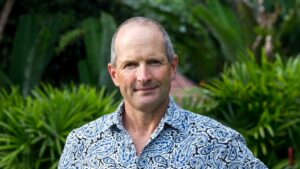
Andre Obradovic is an ICF Leadership PPC Level Coach, A Primal Health Coach, a Certified Low Carb Healthy Fat Coach, & a Certified Personal Trainer. Andre is also a Founding member of the Dr. Phil Maffetone MAF certified Coach. He is an Ambassador for the Noakes Foundation, and a regular subject matter expert lecturer for the Nutrition Network (a part of the Noakes Foundation) Andre has completed 16 x 70.3 Ironmans and in 2017 he competed in the 70.3 Ironman World Championships. He has completed 18 Marathons and over 30 Half Marathons. Andre currently focuses his athletic competition on Track and Field with the occasional Marathon.
Recently, I was asked by a gym member what I thought about an article titled “5 Reasons Carbs Are Not The Enemy” which was written by a dietitian and published on the website of one of the gyms (Goodlife Health Clubs) where I work.
Aside from agreeing with the first two lines of the article, I pretty much disagree with everything else – and here’s why. The article misses the mark on some of the most basic principles of metabolism, it mischaracterizes the low-carbohydrate diet, and it ignores the latest scientific evidence.
1. The author claims that carbohydrates “help to balance your energy levels” and justifies this by saying that low glycaemic index (GI) foods help achieve a “steady, stable stream of energy for two or more hours post consumption”. This is plainly wrong.
When researchers actually put this to the test under experimental conditions, they found that after ingesting carb-laden food with a known GI, the blood glucose response in 63 different people was so wildly varied and unpredictable that the researchers had to conclude that the “GI” value of food could not be used to predict anyone’s glycaemic response.[1]
Nutritionist Jennifer Elliott published a detailed critique of the flawed GI concept in a submission to the Western Australian Government’s investigation into type-2 diabetes (T2DM) prevention and management. She wrote:
“GI ranking of foods [is] one of the most inane concepts in the world of nutrition, despite reasonable competition… The harm caused to people with diabetes in putting their faith in the GI as a way to make food choices that will help manage their condition, instead of a method with a sound physiological basis and proven benefits eg reducing carbohydrate intake, is potentially immense.”[2]
It only takes common sense to realize that minimally processed foods and whole foods like eggs, fish, meat, and butter do not cause dramatic spikes in blood glucose levels; they provide sustained satiety and should constitute the majority of your diet.
The article posted on the gym’s website also claims that “very few people can maintain a low-carb diet beyond 3-6 months, without negative side effects.” A recent peer-reviewed study led by Dr. Sarah Hallberg published in Diabetes Review[3] demonstrated long-term adherence to a low-carb diet that included healthy, satiating fats. The study, funded by Virta, presented data from the first 12 months of a five-year study investigating standard-of-care, low-fat, and low-carb therapies.
I myself have been following an LCHF approach to nutrition for six years, and it is easy. What I find frustrating is when we are constantly told by so-called experts that our brains are going to stop working if we don’t eat enough carbs.
The truth is that on low-carb diets, once we become “fat burners” instead of “carb burners”, our brains can also use ketones (a byproduct of fat metabolism) as a supplementary fuel source.
I have personally coached over 200[4] people over the last three years to improve their health and move away from the poor advice being disseminated to the public. The majority of them are still following their new lifestyles and are loving it.
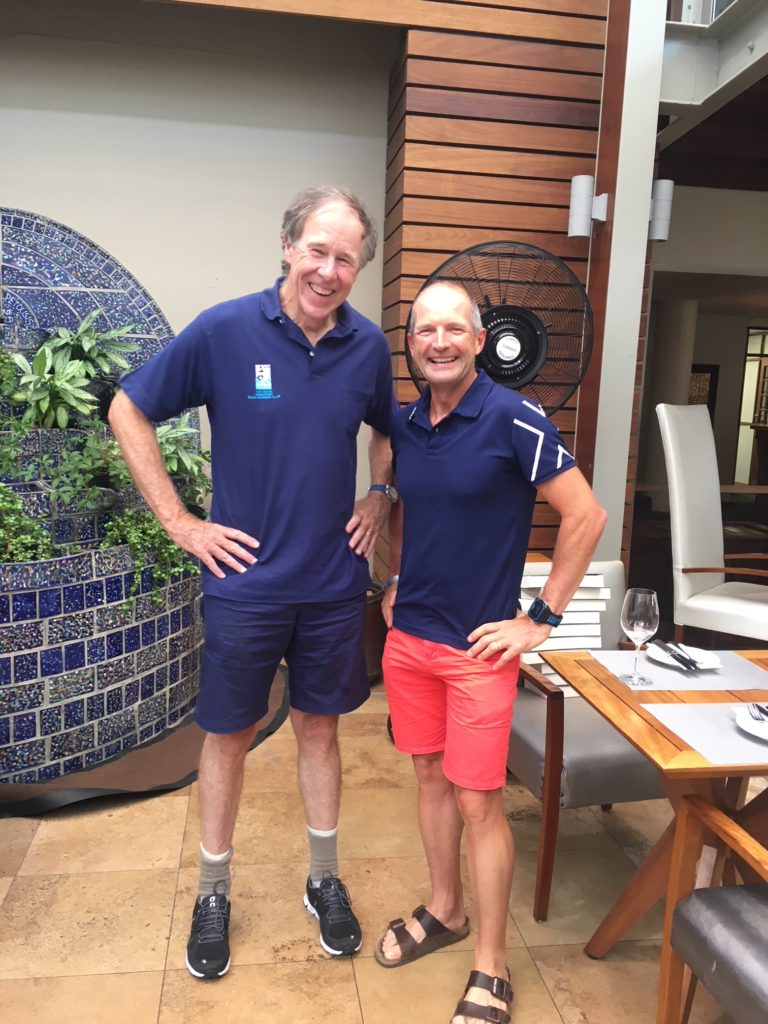
Professor Tim Noakes,[5] who founded the Sports Science Institute of South Africa and was awarded the prestigious South African Association for the Advancement of Science prize, also adopted an LCHF approach six years ago after his father died from T2DM.
Prof. Noakes was shocked after he himself developed T2DM despite being a fit marathon runner. He blamed the constant “carb loading” he did in preparation for his marathons as well as his family history. As a result, he has become one of the world’s biggest advocates for LCHF and has established a research foundation[6] to help turn the tide on obesity and diabetes.
2. The article claims that carbs are “essential for exercise performance.” However, one of the most enduring myths about carbohydrates is that they are “essential” in the diet. Even the most basic biochemistry book will tell you that dietary carbohydrate is not essential macronutrient,[7], unlike protein and fat.
I am not suggesting that we remove all carbohydrates from our diet, as the consumption of appropriate vegetables, depending on your own level of insulin resistance, body composition, and intensity of exercise are important considerations.
The key point is that you do not need to consume carbohydrates because your body can synthesize all the glucose your body needs to carry out the biological process of growth and metabolism. The liver is able to perform this function in a process known as gluconeogenesis.
Research by Dr. Eric Westman analyzed the traditional diets and health statuses of the Inuit, who ate very low-carb high-fat diets, and it clearly shows that these people were very healthy and able to work very hard for weeks and months without ingesting carbohydrates.[8]
While there are healthy populations that have eaten relatively high-carbohydrate diets compared to the Inuit, or the Maasai in Tanzania and Kenya in general, the world has become obese and sick by following the mantra that we need to eat mostly carbs and should not deprive ourselves of them.
There is growing anecdotal evidence that marathon runners and those participating in Iron Man and other ultra-triathlon events have improved their performance after reducing their daily intake of carbohydrate-rich foods.[9]
If you’re interested in hearing more, there is a podcast featuring Stefano Passarello, a CEO based in Hong Kong, who has attained the highest level of triathlon success in his very first year in the sport.
A 2:26 marathon runner who turned to triathlons due to repeated injuries, Stefano qualified for the Hawaii Ironman World Championships and ran a 2:53 marathon off the bike in Kona! This is the third fastest amateur marathon split in the 40-year history of the Ironman!
Stefano’s approach to nutrition is ultra-low-carb.[10][11]
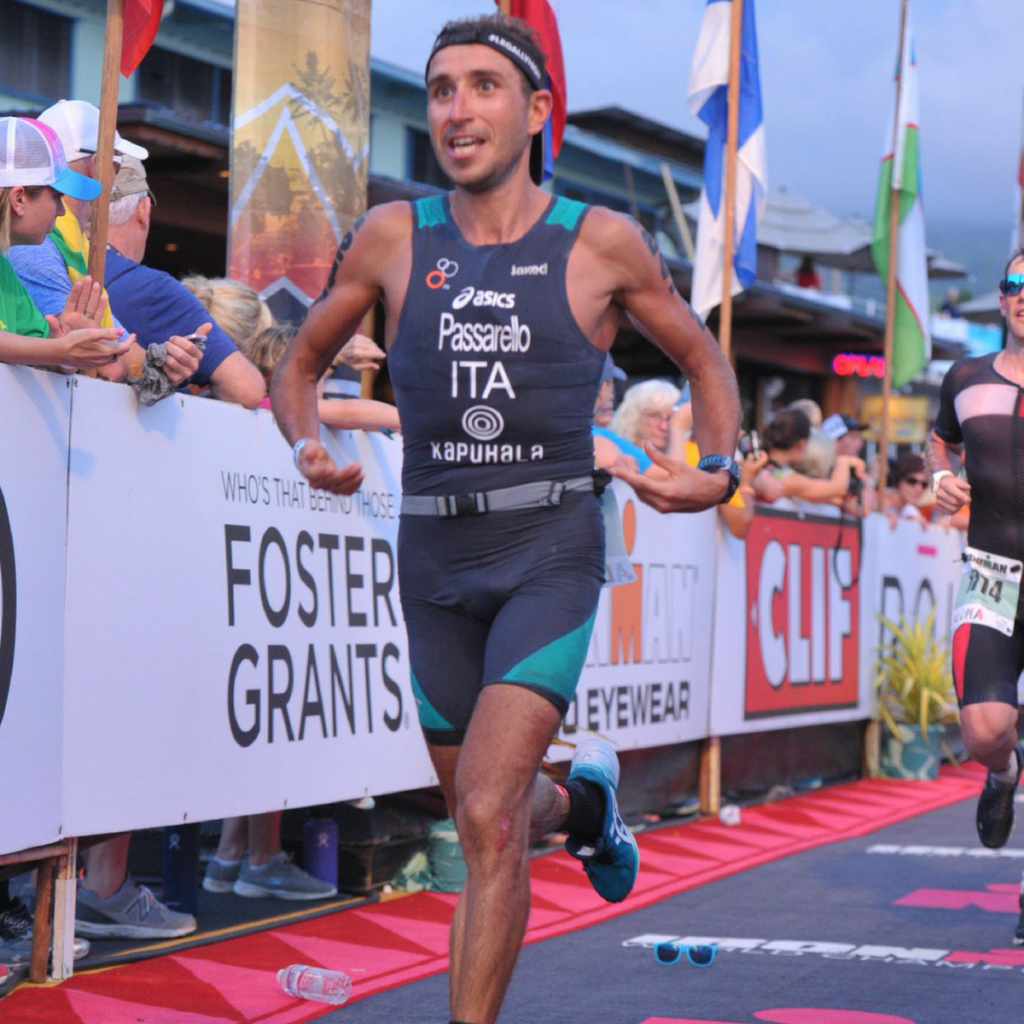
From my own experience over the last six years, I have been training 15 hours a week for Half Ironman and marathons and my performance has increased. I train endurance athletes, all of who follow an LCHF approach to nutrition and it works. Some of the world’s best endurance athletes follow this approach.
I also know from personal experience, when I was following the advice of a highly qualified (but mainstream) nutritionist, I was overweight, frequently injured, and always hungry and stressed. Since sacking them and moving to an LCHF approach, I have been between 64-66kg for six years and running and performing faster than when I was 48.
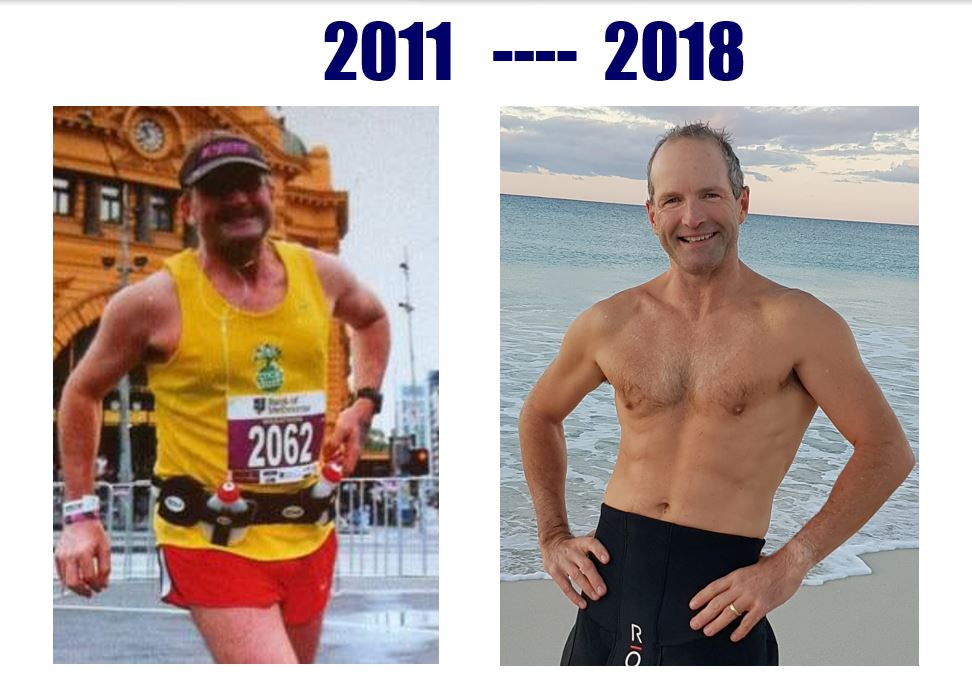
Interestingly, Virta co-founder and CEO Sami Inkinen[12] won his age group at the Ironman 70.3 World Championships only to find out that the same year, he had prediabetes. Unsatisfied with the conventional wisdom of “exercise more and eat less,” Sami delved into the causes of T2DM, leading him to Drs. Stephen Phinney and Jeff Volek, renowned experts on the science of carbohydrate restriction and metabolic health. In a recent blog they wrote:
“Published science has shown that ketones that are produced from either dietary fats or triglycerides stored in our adipose tissue reserves are an excellent fuel for the brain. Further, we now know that these ketones produced by the liver also have multiple beneficial effects on the heart, kidneys, and other organs that appear to translate into improved longevity.[13] [14] [15]
Additionally, new research has highlighted that skeletal muscles, even those of competitive athletes, are not solely dependent on high dietary carbohydrate intake for glycogen replenishment and performance [16].”

Sami Inkinen 2011 Ironman World Championships
Getting back to the article about why you allegedly “need to be eating carbs”, the author also falsely states that if you are “not consuming enough carbohydrates to fuel your exercise, replenish glycogen stores and support essential bodily functions, there is a risk your protein intake will be used for these tasks, and not for muscle growth and repair”, and that this will leave you “vulnerable to injury and illness in the long term.”
This statement is breathtaking, as is the claim that if you are looking to build size and muscle mass, carbohydrates can help you “reach the calorie surplus you need.” To understand how misleading this claim actually is, you only have to read the seminal work of Phinney and Volek: The Art and Science of Low Carbohydrate Performance.
Phinney is a physician and Volek is a dietitian and former champion powerlifter; both have been on a ketogenic (very low-carb, very high-fat, moderate-protein) diet for upward of two decades. They also happen to be two of the world’s foremost experts on the topic of carbohydrates and sports performance.
3. The article claims that high-fiber carbohydrate foods promote bowel health. However, a closer analysis of the literature has led doctors to believe that the benefits of fiber have been oversold.
For example, a well-designed study showed that issues relating to constipation, bloating, bleeding, and pain significantly improved when people cut fiber from their diet.[17]
In a recent issue of the New England Journal of Medicine, there was a major review article on the causes and treatment of Irritable Bowel Syndrome (IBS).[18] One of the points discussed was the role of fiber in bowel function.
For years, modern gastroenterology has put an emphasis on the fiber theory of bowel function which, briefly stated, is the theory that those who consume lots of fiber will have healthy bowel function. Fiber, by the way, is a term that encompasses the family of complex carbohydrates and other substances that are present mainly in the cell walls of plants used as food.
The term includes cellulose, gums, mucilages, pectins, and lignins. Humans cannot digest fiber, and yet these substances are said to contribute to the health of the digestive tract.
Rather than focusing entirely on fiber, we should look at the intestines as a complex ecosystem. Like all ecosystems, the intestines are populated by a wide variety of organisms, all of which interact with each other and their host.
Each organism needs to be fed and its waste products eliminated, and each individual organism and the organisms as a whole have a profound connection with the health or disease of their host.
The big problem with legumes and whole grains is the fact that they can cause serious damage to our digestion, which can lead to mineral deficiencies in the body. As discussed in the reference from the Weston A.
Price Foundation,[19] phytic acid in grains, nuts, seeds, and beans represents a serious problem in our diets. This problem exists because we have lost touch with our ancestral heritage of food preparation. Instead, we listen to “food gurus” and ivory tower theorists, and we eat a lot of high-phytate foods like commercial whole wheat bread and all-bran breakfast cereals, both of which often contain high amounts of sugar.
The author uses epidemiological studies to justify this claim. However, these types of studies are often fraught with limitations because epidemiological studies that show a “weak association” between two factors cannot prove causation.
For example, the idea that vegetarians are healthier than meat eaters is likely to be because the latter group might smoke more or exercise less – in other words, it may have nothing to do with their meat consumption.
On the other hand, there is a considerable amount of evidence from randomized controlled trials (RCTs, the so-called “gold standard of modern science) to show that low-carb diets are more effective at managing diabetes and weight gain compared to low-fat diets.
The article also claims that low-carb diets are “trendy”, ignoring the fact that this nutrition approach was the gold standard treatment for people with type-1 diabetes before the development of medications like insulin.
For further reading, I’d recommend the works of US science writer Gary Taubes, author of Why We Get Fat and What To Do About It, and Nina Teicholz’s ground-breaking work Big Fat Surprise: Why Butter, Meat and Cheese Belong in a Healthy Diet.
Is Goodlife Health Club and the fitness industry as a whole focused on the health and well-being of its members and the community?
Misleading advice from articles like the one I write about here is sure to keep its members overweight and struggling to be fit and healthy, which in turn will keep the fitness industry filling the classes and booking those PT sessions.
I feel quite strongly about this issue, and I’m concerned about the conflicts of interest that exist for the fitness industry at large in terms of delivering appropriate, unbiased messages to the community while trying to maintain its profit margin.
It is time to step up and consider this and to really think about the misinformation that is being peddled to the public in an attempt to capture your business.

Andre Obradovic is an ICF Leadership PPC Level Coach, A Primal Health Coach, a Certified Low Carb Healthy Fat Coach, & a Certified Personal Trainer. Andre is also a Founding member of the Dr. Phil Maffetone MAF certified Coach. He is an Ambassador for the Noakes Foundation, and a regular subject matter expert lecturer for the Nutrition Network (a part of the Noakes Foundation) Andre has completed 16 x 70.3 Ironmans and in 2017 he competed in the 70.3 Ironman World Championships. He has completed 18 Marathons and over 30 Half Marathons. Andre currently focuses his athletic competition on Track and Field with the occasional Marathon.
[1] https://www.ncbi.nlm.nih.gov/pubmed/27604773
[2]http://www.parliament.wa.gov.au/Parliament/commit.nsf/(EvidenceOnly)/44D0D4EEDB83D60C482582F20028F824?opendocument
[3] https://www.virtahealth.com/blog/2yr-t2d-trial-outcomes-virta-nutritional-ketosis
(more…)For 48 years of my life, I was in love with oats, bread, pasta, rice, fruit, and all that ‘healthy’ food that I was led to believe was great for me; it would keep me fit and lean and provide me with sufficient energy for the day.
I was deeply in love and I would get anxious whenever we were apart. When I traveled overseas for business meetings, I would be desperate to keep my love as close as possible. I would often take pastries and muffins from the buffet at the hotel and carry them in my bag to work so I could maintain my energy levels throughout those long days.
However, I was putting on weight no matter how many hours I spent trying to lose it, and I was ALWAYS starving. I started to think this love affair wasn’t giving me what I wanted and that a change was in order.
The next step I took was to engage a ‘marriage counselor’. She begged me to continue and told me I was on the right path – I just needed to adjust my expectations a little, and as I was getting older, the love affair would hopefully diminish.
The ‘marriage counselor’ was, of course, a highly qualified dietitian. I was paying her $200 a session to keep me in love, FAT, and UNHEALTHY.

Here I am in 2011 when I was in love with oats, bread, pasta, and all those ‘health’ foods. I even carried my Endura Carbs-filled drink with me around a 42.2 km race. I was close to 75 kg and not feeling full of energy.
I was sucked in by experts trying to save me from a messy divorce; by the AIS (Australian Institute of Sport) who told me my brain would stop working if I didn’t have enough carbs on board, by running experts, by fitness industry experts – the list goes on. I was convinced I needed to stay in this toxic relationship or there would be no way I would be able to run a marathon without bonking about 3 hours into the race.
Bonking describes a condition caused by the depletion of glycogen stores in the liver and muscles, which manifests itself by precipitous fatigue and loss of energy. It’s what endurance athletes are talking about when they use the term ‘hitting the wall’.
One of those experts happened to be Professor Tim Noakes. Professor Noakes wrote the world-famous “The Lore of Running”, a runner’s bible, and as a running expert, he was adamant that you needed to fuel on carbs.
He was afflicted by the same love affair as me, but when he was diagnosed with type 2 diabetes, he divorced for good and disregarded the nutrition chapter of “The Lore of Running” completely. He came out with this:
“If you’ve got The Lore of Running, tear out the section on nutrition.”
So, after many years of running for hours but not losing weight, being happily married to ‘health’ foods but not getting healthier, and wasting a lot of money on expert advice that didn’t change anything, I decided I was following what I like to call the Conventional Stupidity approach and it just wasn’t right.
I’ve always admired Tim Noakes for his expertise, and now even more so. It takes a certain kind of person to put their hands up and say they got it wrong on a topic they’ve been promoting for years.
It’s a pity that the ‘experts’ have not done the same. You can thank them all for keeping you unhealthy. I had the pleasure of having lunch with Tim recently when I was in South Africa speaking at the initial Nutrition Network Training session.
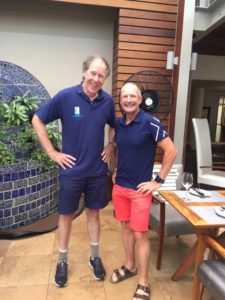
With Professor Noakes leading the way, I was ready for this unhealthy relationship to end, especially after discovering that my true love was having an affair with processed food companies, the fitness industry, sports drink companies, and the supplement industry.
The divorce papers were filed and I made a clean break. No affairs on the side or running back to my old ways. We split, and I said goodbye and fell out of love immediately.
*Note that I also took much advice from other amazing people such as Dr. Stephen Phinney, Prof. Grant Schofield, Peter Defty, Ken Sikaris, and Dr. Jeff Volek.
The moment I made that decision, I found my new love, and it has been a tremendous marriage since day one. It’s a relationship that’s rock-solid – almost as solid as my new-found physicality, endurance, and health. Read more here about exercising less and still losing weight.
My weight loss was easy, fast, and totally sustainable. It became clear just how trapped I’d been. Maybe it’s the polypeptides that addict us to processed foods and grains that make it so hard to take that first step. My old love had me in a trance that was hard to break free from, but once I did, I never looked back.

Here I am in December 2016 finishing a 70.3 Ironman in 5 hours, 3 minutes. I’m 64 kg with no inflammation, running close to 15 minutes faster in a marathon than in the photo at the top of the blog in 2011. The best thing of all: my brain has not stopped working and I am still full of energy.
Plus, at the end of the 2017 endurance running season, I was ranked 10th in the 50-54 age group in the Ironman All World Athlete rankings for Australia in the 70.3 Ironman category (this is the top 5% of my age group). I had clearly made the right decision.
There are many highly successful athletes who have shifted away from Conventional Stupidity, and there’s no telling how much they can achieve now they have the fuel their bodies need to excel. Are you ready to sign the papers?
If you’re in love with porridge, bread, cereal, and processed foods, if you’re constantly exercising but not losing weight, or if you’re spending money on advice that doesn’t seem to be working, then it’s time to get a divorce!
It’s time to get rid of those love handles and get lean. It’s time to find a new, healthy relationship – a relationship that will keep you happy forever and satisfied all day and all night. I can be your matchmaker and help you find TRUE love.
If you’re ready, so am I.
I’m cheaper than a lawyer BUT I am not here to argue with you. I have no interest in trying to convince you that a divorce is the right decision, so please only get in contact if you’re ready to sign the papers and say goodbye to a toxic relationship!
If you’re ready, drop me an email at [email protected].

Andre Obradovic is an ICF Leadership PPC Level Coach, A Primal Health Coach, a Certified Low Carb Healthy Fat Coach, & a Certified Personal Trainer. Andre is also a Founding member of the Dr. Phil Maffetone MAF certified Coach. He is an Ambassador for the Noakes Foundation, and a regular subject matter expert lecturer for the Nutrition Network (a part of the Noakes Foundation) Andre has completed 16 x 70.3 Ironmans and in 2017 he competed in the 70.3 Ironman World Championships. He has completed 18 Marathons and over 30 Half Marathons. Andre currently focuses his athletic competition on Track and Field with the occasional Marathon.
Another stupid myth. Listen to the real experts.
Prof Noakes says: “Weight gain cannot occur without the ingestion of more calories than are needed by the body. In this sense the energy balance model of obesity is correct. But the point is that the over-ingestion of calories cannot occur if the brain appestat is functioning properly, as it did in 1980.
The appestat of the obese must fail because it is especially susceptible to the appetite-stimulating effects of high-carbohydrate foods, especially those found in modern processed foods that are designed with the single goal that they are highly addictive.
It is those addictive foods that have invaded the human food chain in the past 30 years.”
As a personal trainer, I have a responsibility to my clients to provide them with the best advice based on up-to-date science.
I recently watched a video interview by some young personal trainers on #wastebook, and the advice they provided about health and nutrition prompted me to write this article. This is a small section of the full article. If you want to learn more and read the full article, simply click here.
As far as I’m concerned, the advice some trainers are providing and the intense training they are putting their clients through, as though everyone is the same, is based on old principles and old science.
The problem is that almost anyone can become a personal trainer these days. With government funding supporting these courses and the number of gyms supporting these personal trainers, I think it’s getting worse.
In my opinion, there is not enough content covering nutrition on the accredited personal trainer's courses in Australia – certainly not enough to provide the proper advice to someone who has had weight problems for years. Because of this, the advice provided can actually do more damage than good.
This includes injuries through high-intensity workouts that often lack appropriate techniques and elevated cortisol (stress hormone) levels, day after day, session after session, which often leads to adrenal fatigue, weight gain, self-doubt, depression, anxiety, and binge eating.
As a fully qualified personal trainer, group fitness instructor, advanced level 1 Les Mills RPM instructor, spin coach, USA and Australian triathlon coach, and currently ranked number one in my 50-54 age group in the AWA Ironman 70.3 rankings, I do know a little about exercise and nutrition (about me).
However, I don’t pretend to know it all, and I turn to real experts in their fields for guidance.
With help from these experts, I’m going to correct some nutritional advice provided by some young personal trainers.
After four years of restructuring my approach to nutrition and reading an extensive list of books, I have decided to collate much of what I have learned in order to save you four years of your own research.
If after reading this article, you do decide to fundamentally challenge your beliefs on training and nutrition (thanks, Prof. Noakes), you should book some time to talk to me.

Andre Obradovic is an ICF Leadership PPC Level Coach, A Primal Health Coach, a Certified Low Carb Healthy Fat Coach, & a Certified Personal Trainer. Andre is also a Founding member of the Dr. Phil Maffetone MAF certified Coach. He is an Ambassador for the Noakes Foundation, and a regular subject matter expert lecturer for the Nutrition Network (a part of the Noakes Foundation) Andre has completed 16 x 70.3 Ironmans and in 2017 he competed in the 70.3 Ironman World Championships. He has completed 18 Marathons and over 30 Half Marathons. Andre currently focuses his athletic competition on Track and Field with the occasional Marathon.
Ben Greenfield says: “Eating less does not create the need to burn body fat. Instead, it creates the need for the body to slow down. Contrary to popular opinion, the body hangs on to body fat. Instead, it burns muscle tissue, and that worsens the underlying cause of obesity.
Only as a last resort, if the body has no other option, it may also burn a bit of body fat. When you are starving your metabolism wants more stored energy and body fat is the greatest source of stored energy – so it holds onto it.
Your tissues burn a lot of calories so when your metabolism thinks you’re starving it gets rid of calorie-hungry muscle tissue. Studies show that up to 70% of the weight lost while eating less comes from burning muscle – not body fat.”
Tim Rice says: “The old disproven “calories in vs. calories out” model of weight loss simply doesn’t work and does not account for the differing hormonal effects of varying macronutrients.
It is much more likely that an overweight person has eaten too much of the wrong kinds of foods and unfortunately, due to misguided nutritional advice given out by most healthcare providers, they don’t even know what the wrong kinds of foods are.”
Prof. Noakes says: “Persons with insulin resistance have a reduced capacity to burn carbohydrates as fuel both during exercise and when at rest. Humans differ in the ease with which they will gain weight when exposed to a high-carbohydrate diet.”
Tim Rice says: “Obesity is a slow, degenerative, metabolic process of gradually increasing degrees of insulin resistance. No one just wakes up one day to discover that they are obese.
The simplistic “eat less, move more = weight loss” was conceived under the notion that all calories behave the same in our bodies.”
As a personal trainer, I have a responsibility to my clients to provide them with the best advice based on up-to-date science.
I recently watched a video interview by some young personal trainers on #wastebook, and the advice they provided about health and nutrition prompted me to write this article. This is a small section of the full article. If you want to learn more and read the full article, simply click here.
As far as I’m concerned, the advice some trainers are providing and the intense training they are putting their clients through, as though everyone is the same, is based on old principles and old science.
The problem is that almost anyone can become a personal trainer these days. With government funding supporting these courses and the number of gyms supporting these personal trainers, I think it’s getting worse.
In my opinion, there is not enough content covering nutrition on the accredited personal trainers' courses in Australia – certainly not enough to provide the proper advice to someone who has had weight problems for years. Because of this, the advice provided can actually do more damage than good.
This includes injuries through high-intensity workouts that often lack appropriate techniques and elevated cortisol (stress hormone) levels, day after day, session after session, which often leads to adrenal fatigue, weight gain, self-doubt, depression, anxiety, and binge eating.
As a fully qualified personal trainer, group fitness instructor, advanced level 1 Les Mills RPM instructor, spin coach, USA and Australian triathlon coach, and currently ranked number one in my 50-54 age group in the AWA Ironman 70.3 rankings, I do know a little about exercise and nutrition (about me).
However, I don’t pretend to know it all, and I turn to the real experts in their fields for guidance.
With help from these experts, I’m going to correct some nutritional advice provided by some young personal trainers. After four years of restructuring my approach to nutrition and reading an extensive list of books, I have decided to collate much of what I have learned in order to save you four years of your own research.
If after reading this article, you do decide to fundamentally challenge your beliefs on training and nutrition (thanks, Prof. Noakes), you should book some time to talk to me.

Andre Obradovic is an ICF Leadership PPC Level Coach, A Primal Health Coach, a Certified Low Carb Healthy Fat Coach, & a Certified Personal Trainer. Andre is also a Founding member of the Dr. Phil Maffetone MAF certified Coach. He is an Ambassador for the Noakes Foundation, and a regular subject matter expert lecturer for the Nutrition Network (a part of the Noakes Foundation) Andre has completed 16 x 70.3 Ironmans and in 2017 he competed in the 70.3 Ironman World Championships. He has completed 18 Marathons and over 30 Half Marathons. Andre currently focuses his athletic competition on Track and Field with the occasional Marathon.
Dr. Tom O’Bryan says: “No human has the enzymes to fully digest the proteins of wheat, rye, and barley. These grains will cause inflammation and intestinal permeability every time they are eaten.
Dr Alessio Fasano conducted research at Harvard University and recently published a paper that showed that gluten in wheat causes intestinal permeability in every human.
His team studied four populations; recently diagnosed coeliacs, coeliac patients in remission, non-coeliac gluten sensitivity patients, and patients with no sensitivity to gluten, amazingly in his conclusion he states that “increased intestinal permeability after gliadin exposure occurs in all individuals.”
As a personal trainer, I have a responsibility to my clients to provide them with the best advice based on up-to-date science.
I recently watched a video interview by some young personal trainers on #wastebook, and the advice they provided about health and nutrition prompted me to write this article. This is a small section of the full article. If you want to learn more and read the full article, simply click here.
As far as I’m concerned, the advice some trainers are providing and the intense training they are putting their clients through, as though everyone is the same, is based on old principles and old science.
The problem is that almost anyone can become a personal trainer these days. With government funding supporting these courses and the number of gyms supporting these personal trainers, I think it’s getting worse.
In my opinion, there is not enough content covering nutrition on the accredited personal trainer's courses in Australia – certainly not enough to provide the proper advice to someone who has had weight problems for years. Because of this, the advice provided can actually do more damage than good.
This includes injuries through high-intensity workouts that often lack appropriate techniques and elevated cortisol (stress hormone) levels, day after day, session after session, which often leads to adrenal fatigue, weight gain, self-doubt, depression, anxiety, and binge eating.
As a fully qualified personal trainer, group fitness instructor, advanced level 1 Les Mills RPM instructor, spin coach, USA and Australian triathlon coach, and currently ranked number one in my 50-54 age group in the AWA Ironman 70.3 rankings, I do know a little about exercise and nutrition (about me).
However, I don’t pretend to know it all, and I turn to real experts in their fields for guidance.
With help from these experts, I’m going to correct some nutritional advice provided by some young personal trainers.
After four years of restructuring my approach to nutrition and reading an extensive list of books, I have decided to collate much of what I have learned in order to save you four years of your own research.
If after reading this article, you do decide to fundamentally challenge your beliefs on training and nutrition (thanks, Prof. Noakes), you should book some time to talk to me.
If you want to read the full version of my article, just go here and enjoy listening to the real experts. Apparently, Oprah Winfrey collected $12 million from Weight Watchers for posting a tweet about losing weight and eating bread. What a joke.

Andre Obradovic is an ICF Leadership PPC Level Coach, A Primal Health Coach, a Certified Low Carb Healthy Fat Coach, & a Certified Personal Trainer. Andre is also a Founding member of the Dr. Phil Maffetone MAF certified Coach. He is an Ambassador for the Noakes Foundation, and a regular subject matter expert lecturer for the Nutrition Network (a part of the Noakes Foundation) Andre has completed 16 x 70.3 Ironmans and in 2017 he competed in the 70.3 Ironman World Championships. He has completed 18 Marathons and over 30 Half Marathons. Andre currently focuses his athletic competition on Track and Field with the occasional Marathon.